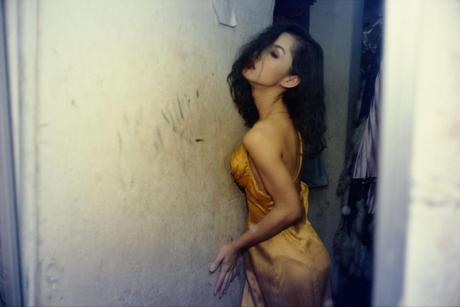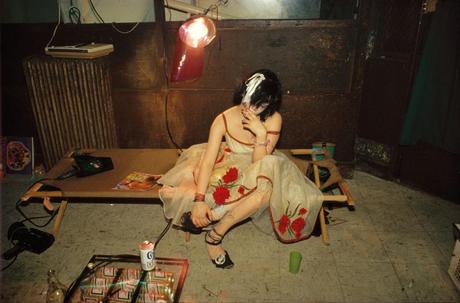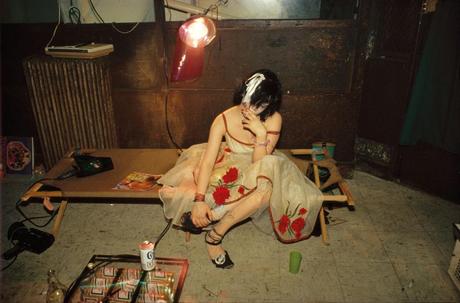
Nan Goldin was working as a go-go dancer in New York in the late 1970s when she realized-thanks to Tin Pan Alley bar owner Maggie Smith, who pointed out-that she was a political artist.
Her best-known oeuvre dates from that period; unflinching yet loving chronicles of the lives of Boston drag queens and New York's post-Stonewall queer scene, of drug use and violence in the city's subcultural underbelly, exploring universal themes of love and sex, domesticity and dependency, pain and performance through examining the friends in her circle, who are so often regarded as outsiders by the wider society.
In more recent years, it has returned to prominence, with vocal protests against museums and galleries' acceptance of money from the Sackler family, then the main owners of Purdue Pharma, the company behind the highly addictive drug OxyContin, which was blamed for the ongoing opioid crisis. As a direct result of her activities over the past six years, institutions around the world - including Tate, the National Portrait Gallery, the Serpentine and more here in Britain - have given or denied Sackler money, and removed the family name from their documents. buildings.
Today, Goldin - who was the subject of a thrilling documentary last year by filmmaker Laura Poitras - was named number one on the annual Art Review Power 100 list, the most prestigious and much-discussed ranking in the art world. That's honestly a bit of a surprise, but a welcome one.
It's probably worth noting that it's a rarity these days for the top spot on the Power 100 to go to someone with actual power, in what we might imagine as the usual sense of the word. Last year it was occupied by ruangrupa, an Indonesian art collective whose model of inclusive, communal production 'disrupts[ed] the normal way of doing things" (even Art Review didn't seem entirely convinced), while the then new CEO of Art Basel, still pretty much the most prestigious art fair in the world, was nowhere to be seen.
The story continues
Or their moments could be very fleeting indeed - in 2021 a non-human entity, ERC-721 (the Ethereum blockchain specification for an NFT) topped the list, something that now seems laughable. Second place that year went to an American anthropologist Anna L Tsing, whose book on the matsutake mushroom and what it says about the Anthropocene I am genuinely interested in reading, but whose I think most people in the art world do not let alone the rest of us had heard of it before the thing was published (she's popping up again this year, at number 18, I really need to buy that book).


If Nan Goldin were truly the "most powerful" person in art, I think we'd live in a world that wouldn't need her sincere, bracing style of truth-telling. But it is a bold and encouraging statement that she was chosen by the forty-strong secret panel (because can you imagine the trolls they would get if they weren't), at the top of a top ten that, for the first time this year, year, consists entirely of artists.
British artist Steve McQueen is there (number 8), for his deeply moving film about the Grenfell Tower disaster "as a catalyst for legal change"; This also applies to the American artist Theaster Gates (7), an artist who combines urban planning and artistic efforts to revitalize neglected urban neighborhoods, especially those where black communities live. Simone Leigh (4), also American, makes work that celebrates black women while simultaneously evoking their historical and ongoing marginalization.
These are, as Art Review puts it, "artists who use their work and the platform that provides their success to shape communities and push the boundaries of what making and sharing art means today."
Activism in the arts is complicated, and it doesn't always have a particularly great effect. In an interview with me last week, the artist Grayson Perry was scathing about it: "If you're going to do activism, do it somewhere where it makes a difference, because every person who ever steps foot in an art gallery is probably agree with you," he said. "You're really preaching to the converted when you make contemporary art about progressive issues."
It's true that the people standing at the back of a forty-minute film about climate change in a darkened room of an art gallery have probably thought about this before. But would anyone say that the women whose work is part of Tate Britain's epic current show Women in Revolt! should have focused on something other than reproductive rights, equal pay and racial equality? No, I do not think so. The work of these artists was a shoulder behind women's liberation in the 1970s and 1980s, and look where we are today (with all the usual caveats).
Nan Goldin's achievement has been enormous, if only to bring about a fundamental change in the way we view the kind of people who should be able to fund our major cultural institutions. But it's more than that: she influenced a generation of young artists, showing them how to stand up and be counted, how to speak truth to power, how to share their personal experiences (Goldin struggled even with opioid addiction) toward significant change. And that is why this award feels more than justified.
What the Culture Editor did this week
Fellow Travelers, Paramount+
I'm in four episodes of this glossy series based on the novel by Thomas Mallon, which chronicles a decades-long romance between two men working for the U.S. State Department, beginning at the height of McCarthyism in 1953. Matt Bomer and Jonathan Bailey are excellent as the central couple, a cynical, ambitious political aide adept at compartmentalizing, and an idealistic, young congressional staffer, and the extremes of their heartbreaking situation play on my mind all week.
She stoops to conquer, Orange Tree Theater
This silly comedy of manners is one of the few 18th century plays that is revived on a fairly regular basis and to be honest I'm not sure why that is still the case. Tanya Reynolds (Sex Education) is brilliant in it, both archaic and naturalistic, elevating the proceedings every time she's on stage, while Freddie Fox is always great as ridiculous, self-righteous berks, but I found it hard to grasp what her character took notice of him, and a late, endless scene in a garden, made me want to tear down the latticework. Listen to our verdict on the show on this week's Standard Theater Podcast; the new episode comes out on Sunday.
